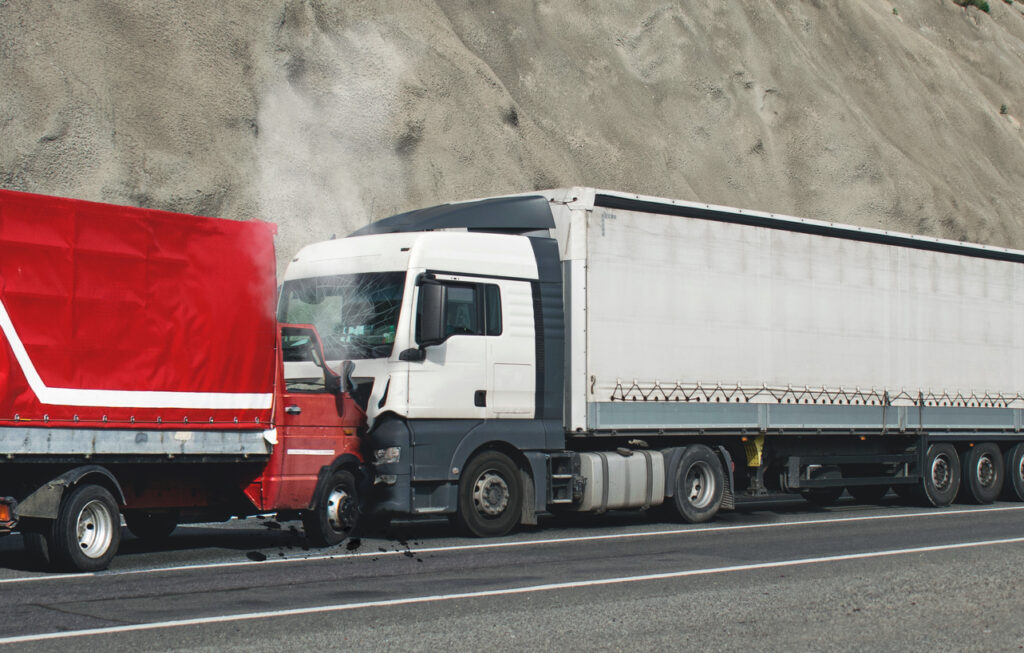Texas highways are among the busiest in the country, and with that traffic comes a heightened risk of accidents involving large commercial trucks. When a collision occurs, the consequences are often devastating—leaving victims with serious injuries, mounting medical bills, and uncertain futures. In these situations, knowing how to pursue a fair settlement for truck accidents in Texas is more than helpful—it’s crucial.
This comprehensive guide walks you through each phase of the legal process, showing you exactly how to protect your rights and maximize your recovery after a truck crash. Whether you’re just beginning to explore your options or are deep into negotiations, understanding every step of the settlement process can have a major impact on your financial outcome.
Step One: Recognize the High Stakes of a Texas Truck Accident Claim
Securing a strong settlement for truck accidents in Texas starts with understanding the heightened complexity of these cases. Unlike typical motor vehicle collisions, truck accident claims may involve multiple at-fault parties, including the truck driver, the carrier, third-party contractors, and even vehicle manufacturers.
In Texas, the presence of commercial liability insurance and strict state and federal regulations increases both the value and the difficulty of achieving a fair settlement. Because injuries are often severe and damages extensive, your claim may include compensation for current and future medical bills, lost wages, property damage, and pain and suffering.
Step Two: Seek Immediate Medical Care and Preserve Records
One of the most common—and costly—mistakes victims make after a truck accident is delaying medical treatment. Insurance companies may argue that a delay suggests your injuries are not serious or not accident-related. Seeking immediate care provides a clear timeline and creates strong medical documentation to support your settlement for truck accidents in Texas.
Keep records of every diagnosis, follow-up, prescription, and recommendation. Your medical file becomes central to calculating the value of your claim and helps ensure that no aspect of your injury is undervalued or overlooked.
Step Three: Identify All Potentially Liable Parties
Truck accident liability often extends far beyond the driver. If the vehicle was overloaded, poorly maintained, or the driver exceeded their legally allowed hours, multiple parties may share legal responsibility. Naming all liable parties increases your chances of securing a higher settlement for truck accidents in Texas, since more insurance policies could be triggered by the claim.
Investigating every potential contributor to the crash—from freight handlers to maintenance crews—allows you to build a more comprehensive and financially sound case.
Step Four: Preserve All Evidence Early
Preserving evidence after a crash is key to building leverage in settlement negotiations. Texas law rewards the prepared, and that preparation should begin as soon as possible after the accident. Photos of the crash scene, black box data from the truck, dashcam footage, and witness statements all serve to support your demand for a fair settlement for truck accidents in Texas.
Additionally, trucking companies often control much of the technical evidence, such as inspection logs and employment records. A formal spoliation letter sent early can prevent the destruction of critical information.
Step Five: Understand the Role of Comparative Negligence in Texas
Texas uses a modified comparative fault system, meaning your compensation can be reduced based on your percentage of fault. If you’re found 30% at fault, your final settlement for truck accidents in Texas would be reduced by 30%. If you’re over 50% at fault, you may be barred from recovery altogether.
This legal structure makes it crucial to build a strong liability case and proactively challenge any unjust blame placed on you. The more you can reduce your share of fault, the more favorable your financial outcome.
Step Six: Calculate the Full Value of Damages
A fair settlement for truck accidents in Texas must reflect the full scope of your losses. Economic damages include all current and future medical bills, rehabilitation, lost earnings, and property damage. But equally important are noneconomic damages—pain, mental anguish, loss of enjoyment of life, and permanent disability.
If your injuries have lasting consequences, future care projections and vocational assessments should be included in your demand. A well-calculated damages claim adds power to your settlement negotiations and helps prevent insurance companies from undervaluing your experience.
Step Seven: Know How to Handle Insurance Adjusters
Insurance adjusters are trained negotiators working to minimize what their companies pay. They may use various tactics—such as delay, denial, or offering quick lowball settlements—to protect their bottom line. Remaining cautious and limiting communication can protect your settlement for truck accidents in Texas from being diminished before you’ve evaluated the full extent of your damages.
Never accept a settlement or give a recorded statement without first understanding your rights and the true value of your claim.
Step Eight: Understand the Value of Black Box and Logbook Data
Modern commercial trucks are equipped with event data recorders, often referred to as black boxes. These devices store critical information about speed, braking, steering, and hours of operation. If the black box reveals that the truck was speeding or the driver violated rest regulations, that evidence can directly support your settlement for truck accidents in Texas.
Electronic logbooks are also valuable and may reveal compliance failures with federal Hours-of-Service rules. Such violations can be used to argue for higher compensation based on gross negligence or safety infractions.
Step Nine: Explore Every Avenue of Compensation
In some cases, the at-fault party may not have enough insurance coverage to meet the full extent of your damages. Exploring additional policies—such as employer liability, third-party contractors, or umbrella policies—can increase the size of your settlement for truck accidents in Texas.
You may also be eligible for compensation through underinsured motorist coverage or medical payments coverage depending on your personal policy. Looking beyond the primary policy ensures you’re not leaving money unclaimed.
Step Ten: Document the Long-Term Impact of Your Injuries
For many truck accident victims, the physical and emotional impact lasts far beyond the initial recovery. Chronic pain, PTSD, reduced mobility, and permanent disability can all shape the long-term quality of life. Demonstrating these lasting effects through medical evaluations, psychological assessments, and personal journals enhances the noneconomic value of your settlement for truck accidents in Texas.
Including documentation of emotional suffering and day-to-day challenges gives weight to your claim and can justify a higher compensation amount.
Understanding Long-Term Compensation for Catastrophic Injuries
Paralysis is among the most devastating injuries that can result from a high-impact vehicle collision. It often requires continuous medical care, home modifications, and emotional support, all of which significantly increase the long-term financial burden. For victims facing permanent disability, understanding the full extent of their legal options is crucial. This comprehensive resource on compensation for paralysis after a car accident: what victims need to know offers deeper insight into how damages are calculated and what legal factors influence total recovery for those coping with life-altering injuries.
Step Eleven: Don’t Underestimate the Power of Precedent
Looking at similar legal outcomes in Texas can help strengthen your negotiation strategy. If cases with similar injuries or circumstances resulted in six- or seven-figure settlements, those precedents can help set a baseline for what’s fair in your case.
Understanding the average personal injury settlement amounts for truck accidents in Texas can help anchor your expectations. For more insights, explore this detailed guide to personal injury settlement amounts for truck accidents in Texas, which outlines what factors influence payout ranges and how similar cases have been handled in Texas courts.
Step Twelve: Prepare Thoroughly for Mediation or Trial
While many truck accident claims are resolved through settlements, some proceed to mediation or trial when disputes arise over liability or damages. Being fully prepared for this possibility—through a solid case file, well-organized evidence, and persuasive argumentation—positions you for success.
Even if you don’t go to trial, your readiness can prompt the opposing side to increase their offer, improving the final terms of your settlement for truck accidents in Texas.
Step Thirteen: Comply With the Texas Statute of Limitations
Texas law sets a strict two-year deadline to file a personal injury claim. Missing this window can completely bar recovery, no matter how strong your case is. To secure your right to a settlement for truck accidents in Texas, you must take timely legal action and ensure all paperwork is filed within the statutory period.
For more legal context, the full text of the Texas Civil Practice and Remedies Code §16 provides details on how the statute of limitations is applied in personal injury cases.
Conclusion: Securing the Settlement You Deserve
Truck accident cases are high-value, high-risk legal matters that require a calculated and thorough approach. From preserving key evidence to understanding how fault impacts recovery, each step you take influences your final settlement for truck accidents in Texas. This step-by-step guide outlines the most critical actions to take, helping you navigate the legal process with clarity and control.
A fair settlement should reflect not only your visible injuries but also your emotional suffering, lost time, and altered future. By following each step outlined here and applying pressure through strategic documentation and negotiation, you place yourself in the best position to achieve full and fair compensation for your losses.
If you’re still trying to estimate the value of your claim or considering your next move, don’t overlook how each detail—from black box data to maintenance logs—can tip the scales in your favor during a settlement for truck accidents in Texas.



